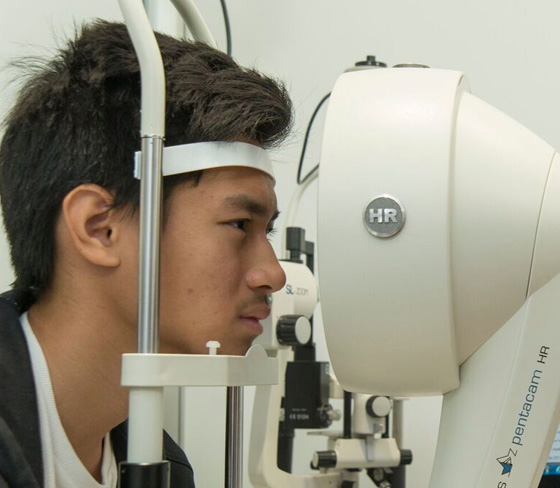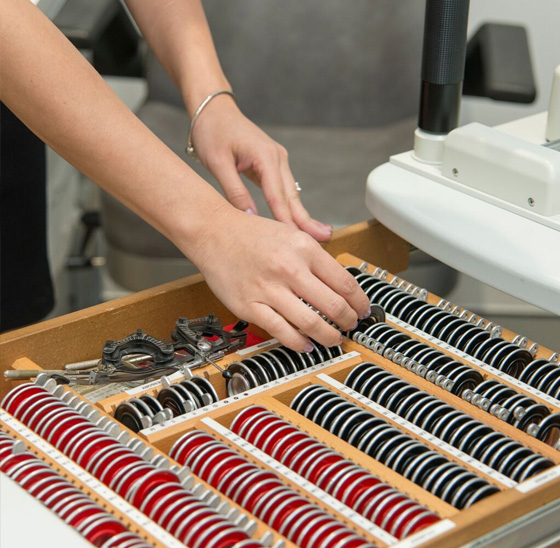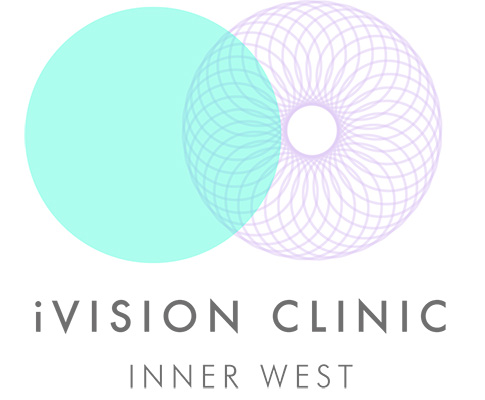What is keratoconus?
Keratoconus is a progressive disease of the cornea. It is the thinning and consequential distortion of the cornea. The cornea develops a cone-like bulge in the centre where it is normally spherical. The cone shape causes light to scatter as it enters the eye which causes visual distortion and significant visual impairment. Keratoconus can be bilateral or unilateral and is normally detected in patients in their teens or twenties.
Causes
The causes remain unknown, however studies show that genetics can play a role with about 8% of patients having relatives with this corneal disease. New research has suggested that weakening of corneal tissue that leads to keratoconus can be attributed to an imbalance of enzymes in the cornea. This imbalance makes the cornea weaker and oxidative damage can occur causing the cornea to weaken.
Keratoconus is known to be associated with eye rubbing. Patients who suffer from allergies such as hayfever can experience symptoms of itchiness and sensitive skin, which can cause excessive eye rubbing. Other factors can also be poorly fitted contact lenses which may lead to chronic eye irritation.

Signs and symptoms
Common signs in early stages of keratoconus include:
- Blurred and distorted vision can be corrected with glasses or contact lenses
- Frequent changes to glasses prescription.
As the keratoconus progresses the cornea thins and becomes more warped/irregular – this is when glasses and soft contact lenses are often not an option, as they are unable to correct higher levels of astigmatism.
Treatment options
Gas permeable contact lenses
These are rigid lenses that sit very tightly to the cornea and alter the irregular shape to improve vision. These are not very comfortable however patients tend to get used to wearing them. They require frequent visits to the optometrist to fit and change the prescription.
Collagen Cross Linking (UVX or CXL)
Collagen Cross linking slows the progression of corneal thinning due to keratoconus. Treatment involves the use of riboflavin (Vitamin B2) drops on the cornea and applying ultraviolet light after the cornea has absorbed the riboflavin.
After treatment, antibiotic drops are applied, a bandage contact lens is put in place and a clear eye shield is worn overnight until the surface of the eye has healed (usually between one and five days).
Cross linking has shown to increase corneal rigidity, and stops progression of keratoconus in over 90% of those who undergo the procedure.
Advantages of UVX or CXL
- No injection, no stitches & no incisions
- Quick & easy treatment with low costs
- Simple one time treatment on each eye
- Halts the progress and causes some regression
- Prevents the need for a corneal transplant
- Deeper structures of the cornea aren’t damaged
When can I wear contact lenses again?
You can return to wearing lenses after one month. Your lenses may need to be changed if your cornea changes shape.

Corneal Rings
Corneal Intrastromal rings such as Kerarings, Ferrara Rings and Intacs are an alternative treatment for keratoconus.
The Keraring inserts are small plastic semicircular inserts and are designed to remain permanently in the cornea. They can be removed or replaced if required. Kerarings are inserted into the cornea to alter the shape. The treatment aims to produce a more rounded, even shape, improving the quality of vision
The procedure is performed under local anaesthesia. A single stitch may be used if required over the incision.
As with any surgical procedure there are potential risks and benefits. This procedure is designed to allow for better vision with the help of glasses or contact lenses – however some patient may not need them after surgery.
Corneal transplant
In severe cases a corneal transplantation may be needed due to scarring, extreme corneal thinning or increased intolerance to contact lenses.
This procedure replaces the damaged cornea with healthy donor tissue. Patients may still be required to wear optical correction to enhance vision.
